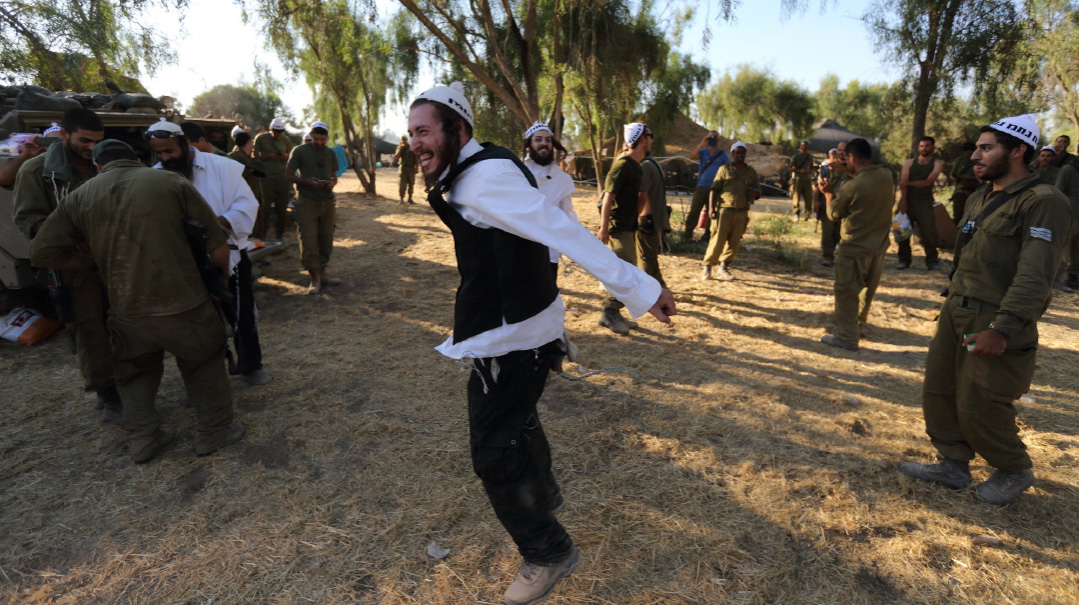Breaking Free to Geulah

Mashiach can only come from a seed other than the one that gave birth to Kayin
Rav Aaron Lopiansky, rosh yeshivah of the Yeshiva of Greater Washington, recently published Seed of Redemption, his English adaptation of Rav Yosef Lipovitz’s Nachalas Yosef on Megillas Rus. Just in time for Shavuos.
When Nachalas Yosef was presented to Rav Gedaliah Nadel, one of those closest to the Chazon Ish, “he read it breathlessly from beginning to end, sobbing uncontrollably. [When he finished], he said, ‘it is 500 years since a sefer of this kind was written; undoubtedly, it was written with ruach hakodesh,” according to an eye-witness account.
Nachalas Yosef weaves the words of Chazal together in a seamless tapestry, not as isolated comments. The commentary demonstrates that Chazal’s words are not fanciful extrapolations from the text, but careful explications of the verses, which peel back layers of meaning..
Rav Lipovitz, a close talmid of the Alter of Slabodka, introduces his commentary with two essays on recurrent themes throughout the megillah. The first focuses on chesed. “Rav Zeira said, ‘[The megillah was written] to teach me how much reward lies in store for people who perform deeds of kindness’ ” (Rus Rabbah 2:14).
Chesed, as defined by the Rambam in Moreh Nevuchim, is acts of benevolence toward one’s fellow man to whom no duty, or even sense of duty, exists. The paradigmatic act of chesed was Hashem’s creation of the world, which obviously did not emanate from a preceding obligation. Every act of chesed, then, attests to the Creator, for it flows from the breath of the Divine within us. Avraham was able to deduce the existence of the Creator “from himself,” from his own middah of chesed.
Not only is chesed the foundation stone of the world, and necessary for its continuation, it is through chesed that the world will come to final establishment of the Davidic kingdom with the coming of Mashiach. Thus the centrality of chesed to the story leading to the birth of Dovid Hamelech.
The second essay describes the period of the Judges, which was in many ways the antithesis of a world of chesed. Chazal ask how the nation degenerated so rapidly following the death of Yehoshua. They find a hint in the description of Yeshoshua’s burial. Nowhere does it say that the people mourned Yehoshua, after burying him north of Gaash (Yeshoshua 24:29–30).
Nowhere else in Tanach is a place called Gaash mentioned. That absence leads Rav Berachiah to deduce that the meaning of the verse is that the people were too preoccupied (nisgaashu) to mourn Yehoshua. They were involved instead in their properties, fields, and vineyards. (See Rus Rabbah Psicha 2)
Materialism and self-absorption were the culprits. The entire period of the Judges is described as one in which each man did what was straight in his eyes. They acted without any consideration of anyone but themselves.
Chazal found in a verse in Mishlei (19:15) — “Laziness begets slumber, and the deceitful soul starves” — stages of decline. Because Yisrael was lazy in paying their respects to Yehoshua, and were deceitful to Hashem, even to the point of idol worship, Hashem starved them of the Divine spirit. Overindulgence in material pleasures led to a slackening of chesed, and ultimately to spiritual slumber.
But because Hashem can neither destroy His rebellious people nor return them to Egypt nor exchange them for another, He must instead bring upon them famine to awaken them from their spiritual slumber. Megillas Rus begin with a terrible famine. (Perhaps today we could substitute plague for famine.)
THE EVENTS of Megillas Rus all foreshadow the process culminating in Mashiach. The first verse tells us “va’yeitzei ish — a man went out,” a phrase that appears in only one other place in Tanach — with respect to Amram’s taking back his wife Yocheved. The earlier event led to the birth of Moshe Rabbeinu, the Redeemer of Israel from Egypt, and the second va’yeitzei ish, for which Elimelech is sharply criticized by Chazal, ironically sets in motion the process leading to the final Redeemer.
Particularly subtle is Nachalas Yosef’s treatment of Orpah. She and Rus are sisters. Orpah does not feign her love for Naomi. Her tears upon parting from Naomi are genuine. For each tear shed, say Chazal, she was rewarded with another gibur as a descendant.
Her decision not to accompany Naomi followed normal human logic. There was little she could do to significantly improve Naomi’s fate, and by joining her mother-in-law she would be dooming herself to self-extinction, for who would marry a daughter of an enemy nation. She was, in essence, following the halachic principle, “Your life takes precedence.”
It was Rus’s decision that was unnatural, or above nature, as it were. For Rus, the ideals she saw embodied in Naomi were not just ideals that enhance life, but ideals for which it was worth sacrificing one’s life. Naomi’s truth was the higher prophetic truth from which the ultimate tikkun haolam derives. As David told Golyas, the descendant of Orpah, “You come against me with the sword and spear, and I come with the Name of Hashem….” (I Shmuel 17:45). The strength of Israel in all our battles is not the strength of human logic, but the strength of steadfast clinging to Hashem.
Breaking free of any trace of self-absorption, as Rus did, is the key to the messianic process. Boaz, the male forebear of Dovid Hamelech, and through him Mashiach, is introduced, “And his name was Boaz.” Evildoers, however, are introduced by their name first: “Golyas is his name” (I Shmuel 17:4). Since the wicked act primarily out of their self-interest, their name comes first.
Boaz greets his harvesters, “May Hashem be with you.” That usage of Hashem’s Name in routine greetings is one of three rabbinic decrees to be endorsed by the Heavenly Court (Yerushalmi Berachos 9:5). The greeting serves as a reminder that we all have a common Father and are made in His Image. As such, it hints to the tranquillity and universal brotherhood that will characterize the messianic era.
When Boaz awakens at midnight and finds Rus sleeping at his feet, he could have cursed or shamed her, for her apparent brazenness. Instead he blesses her, “Your last chesed is greater than your first.” The Targum translates the first chesed as her conversion, the very conversion that made it possible to enter the Jewish People and marry Boaz.
But what does conversion have to do with chesed? Unlike other converts — e.g., Yisro, Rachav, and Naaman — Rus did not convert because she witnessed the overwhelming power of Hashem. But rather she saw the sweetness of Naomi’s ways. Her recognition of Hashem, like that of Avraham Avinu, was through chesed.
And it was her good intentions — her second chesed in coming to the granary — that Boaz discerned. So too were Tamar’s intentions good when she risked everlasting shame by hiding her identity from Yehudah in order to give birth to Peretz. The latter’s geneology through Boaz to David is emphasized in the megillah’s closing verses.
Similarly, did Lot’s daughters sacrifice themselves out of the best of intentions — to preserve humanity. The verse refers to them as the nimzaos in Sedom, and Chazal expound that they are the ancestors of two metzios (precious found objects) — Rus the Moabite and Na’amah the Ammonite, who form the matriarchal line to Mashiach.
Chazal take note that Lot’s daughters did not express a desire for children from their father, but rather “seed.” In so doing, they hinted to a process going back to the beginning of human history. When Chavah gave birth to Shes, she referred to him as “zera acher — a different seed.” Chazal explain: a seed from a different place, i.e., from Mashiach.
Mashiach can only come from a seed other than the one that gave birth to Kayin. Kayin viewed the world as a zero-sum game. In his worldview, anything that elevated Hevel must diminish himself. Mankind built on the seed that brought forth Kayin will inevitably implode. Only from “another seed,” one steeped in chesed, will Mashiach come.
May that seed of redemption come to fruition speedily in our days.
Chag samei’ach.
Originally featured in Mishpacha, Issue 812. Yonoson Rosenblum may be contacted directly at rosenblum@mishpacha.com
Oops! We could not locate your form.







